This article was co-authored by wikiHow Staff. Our trained team of editors and researchers validate articles for accuracy and comprehensiveness. wikiHow's Content Management Team carefully monitors the work from our editorial staff to ensure that each article is backed by trusted research and meets our high quality standards.
There are 14 references cited in this article, which can be found at the bottom of the page.
The wikiHow Video Team also followed the article's instructions and verified that they work.
This article has been viewed 177,351 times.
Learn more...
There is a certain beauty to natural dyes that you just can't get with regular fabric dyes. Although the results aren't quite as color-fast as store-bought dyes, they are gorgeous in their own way. The process is simple, and once you know how to do it with beets, you can try using other natural products, such as red cabbage or turmeric.
Steps
Preparing the Dye and Fabric
-
1Peel 3 to 4 beets, then cut them into large chunks. The size of the chunks doesn't really matter, but something between 1 and 2 inches (2.5 and 5.1 cm) would work great. Don't use whole beets, because they won't release enough dye.[1]
- You don't want to cut the beets too small. If you do, the pieces will be harder to remove later on.
-
2Place the beets into a pot, then fill the pot with water. How much water you use will depend on the size of the pot. Use enough water to fill the pot 1 to 2 inches (2.5 to 5.1 cm) from the rim.[2]
- You will be boiling the water shortly, so the temperature does not matter.
Advertisement -
3Place white cotton or linen fabric into a separate pot. The pot needs to be large enough for the fabric to be able to move around freely. For best results, use something made from white cotton or linen.[3]
- It would be a good idea to wash and dry the fabric beforehand. This will remove any chemicals that might prevent the dye from adhering.
- Natural dye does not stick well to synthetics, so use natural fibers, such as cotton or linen.
- You can use this method to dye articles of clothing as well, as long as they are made from white cotton or linen.
-
4Fill the clothing pot with a 1-to-4 ratio of vinegar-to-water. Fill the pot about a quarter of the way with vinegar first. Push the fabric into the vinegar to ensure that it's soaked through, then fill the remaining three-quarters of the pot with water.[4]
- You are only doing this for the pot that has the fabric in it. Don't add anything to the pot with the beets in it.
- The vinegar will act as a fixative and help the dye adhere better to the fabric.
- Alternatively, use 1/2 cup (150 g) of salt for every 8 cups (1.9 L) of water.[5]
Dyeing the Fabric
-
1Bring both pots to a boil on the stove. Set each pot down on a separate burner. Turn the heat up to medium or medium-high, then wait for the water to come to a boil. This may take a few minutes.[6]
- Wait for both pots to come to a boil before moving on to the next step.
-
2Reduce the heat to low, then let both pots simmer for 1.5 to 2.5 hours. Again, you want this to happen simultaneously for both pots. Turn the knobs for both burners to low, then wait for the water to reduce to a simmer. Set the timer for anywhere between 1.5 and 2.5 hours.[7]
- The longer you let the water simmer, the brighter the color will be.
-
3Empty the water from the fabric pot. Use a wooden spoon, or something similar, to hold the fabric in place as you pour out the vinegar water. Don't worry if there is some liquid left in the pot.[8]
- Don't empty the water from the dye pot.
-
4
-
5Pour the dye into the fabric pot, then stir the dye. Be sure to pour the dye slowly so that it doesn't splash. Next, stir the pot to ensure that everything is submerged; you may have to poke the folds of fabric to get them to stay down.[10]
- You won't be able to fill the fabric pot all the way. This is because some of the beet water evaporated while you cooked it.
-
6Soak the fabric off-heat in the dye for 12 to 24 hours. There is no need to soak it for longer than that. Make sure that the fabric is fully submerged, however, or it may not dye evenly. If you need to, weigh the fabric down with a plate, bowl, or jar.[11]
- Take the pot off the stove for this. Don’t let the dye bath keep simmering for these 12 to 24 hours.
Rinsing and Setting the Dye
-
1Remove the fabric from the dye bath and squeeze it. Do not rinse the fabric, or you may lose some of that beautiful, vibrant color. Just pull the fabric out and gently squeeze the excess dye from it.[12]
- It might be a good idea to wear plastic gloves for this step. The beet water may stain your hands for a few days.[13]
- If you don't mind a lighter shade of pink, you can rinse the fabric in cool water.
-
2Dry the fabric in the hot sun or in a dryer. Heat is key to setting the dye into the fabric. If you live in a warm, sunny climate, drying the fabric outside work the best. Otherwise, toss the fabric into the dryer, and dry it on a low-heat setting.[14]
- If you are drying the fabric outside, keep a pot or bucket under it to catch any drips of dye.[15]
-
3Iron the fabric for 5 minutes to further set the dye. Adjust your iron to a no-steam, low-heat setting. Place the fabric on the ironing board, then iron it for about 5 minutes. Not only will this help further set the dye into the fabric, but it will also smooth out wrinkles.[16]
- Even though your fabric is made from cotton or linen, you should still use a low-heat or warm setting on your iron. Don't use the cotton or linen setting.
- There is a chance that some of the dye may transfer to the ironing board. Consider covering the board with an old, clean cloth first.
-
4Hand wash the fabric in cold water only when necessary. Even with the added vinegar, this is a natural dye. It is safer for the environment than regular dye, but it is not permanent. To help preserve the color, hand wash the fabric in cold water only when necessary; avoid using a washing machine, if possible.[17]
- If you choose to use a washing machine, use a cold water setting. Wash the dyed fabric separately to avoid color transfer.[18]
Community Q&A
Did you know you can get answers researched by wikiHow Staff?
Unlock staff-researched answers by supporting wikiHow
-
QuestionHow long does beet dye last?
 wikiHow Staff EditorThis answer was written by one of our trained team of researchers who validated it for accuracy and comprehensiveness.
wikiHow Staff EditorThis answer was written by one of our trained team of researchers who validated it for accuracy and comprehensiveness.
Staff Answer wikiHow Staff EditorStaff Answer
wikiHow Staff EditorStaff Answer -
QuestionDoes beetroot make your hair red?
 wikiHow Staff EditorThis answer was written by one of our trained team of researchers who validated it for accuracy and comprehensiveness.
wikiHow Staff EditorThis answer was written by one of our trained team of researchers who validated it for accuracy and comprehensiveness.
Staff Answer wikiHow Staff EditorStaff Answer
wikiHow Staff EditorStaff Answer -
QuestionWhich fruits and vegetables make the best dyes?
 wikiHow Staff EditorThis answer was written by one of our trained team of researchers who validated it for accuracy and comprehensiveness.
wikiHow Staff EditorThis answer was written by one of our trained team of researchers who validated it for accuracy and comprehensiveness.
Staff Answer wikiHow Staff EditorStaff Answer
wikiHow Staff EditorStaff Answer
Things You'll Need
- 2 pots
- Large spoon
- Slotted spoon
- White cotton or linen fabric
- Vinegar
- 3 to 4 beets
- Iron
- Rubber or plastic gloves (optional, but recommended)
References
- ↑ https://www.youtube.com/watch?v=xlwA0XA5WHU&feature=youtu.be&t=15s
- ↑ https://www.youtube.com/watch?v=xlwA0XA5WHU&feature=youtu.be&t=1m5s
- ↑ https://countrysidenetwork.com/daily/lifestyle/fiber-crafts/using-vegetables-for-natural-clothing-dye/
- ↑ https://www.youtube.com/watch?v=xlwA0XA5WHU&feature=youtu.be&t=1m40s
- ↑ http://earthdivasblog.com/2010/07/13/how-to-dye-fabric-with-natural-dyes/
- ↑ https://www.youtube.com/watch?v=xlwA0XA5WHU&feature=youtu.be&t=2m30s
- ↑ https://www.youtube.com/watch?v=xlwA0XA5WHU&feature=youtu.be&t=2m50s
- ↑ https://www.youtube.com/watch?v=xlwA0XA5WHU&feature=youtu.be&t=3m15s
- ↑ https://www.youtube.com/watch?v=xlwA0XA5WHU&feature=youtu.be&t=3m30s
- ↑ https://www.youtube.com/watch?v=xlwA0XA5WHU&feature=youtu.be&t=3m45s
- ↑ https://countrysidenetwork.com/daily/lifestyle/fiber-crafts/using-vegetables-for-natural-clothing-dye/
- ↑ https://www.youtube.com/watch?v=xlwA0XA5WHU&feature=youtu.be&t=4m50s
- ↑ https://www.1millionwomen.com.au/blog/how-to-make-natural-dyes-to-dye-fabric-clothes-at-home/
- ↑ https://countrysidenetwork.com/daily/lifestyle/fiber-crafts/using-vegetables-for-natural-clothing-dye/
- ↑ https://www.youtube.com/watch?v=xlwA0XA5WHU&feature=youtu.be&t=5m15s
- ↑ https://countrysidenetwork.com/daily/lifestyle/fiber-crafts/using-vegetables-for-natural-clothing-dye/
- ↑ https://www.youtube.com/watch?v=xlwA0XA5WHU&feature=youtu.be&t=4m5s
- ↑ https://www.1millionwomen.com.au/blog/how-to-make-natural-dyes-to-dye-fabric-clothes-at-home/
About This Article
If you want to dye fabric with beets, the process is relatively simple and the results are beautiful. Start by peeling 3 to 4 beets and cutting them into large chunks. Place them in a pot of water and bring them to a boil. Then, put your white cotton or linen fabric that you plan to dye into a separate pot. Fill the clothing pot with a 1 to 4 ratio of vinegar to water, then boil the liquid. After both pots come to a boil, turn them down to simmer for about 2 hours. You’ll then empty the water from the fabric pot and remove the beets from the dye pot. Pour the dye into the fabric pot, and stir the material around until it’s fully and evenly coated. Let the fabric continue to soak in the beet dyed water for 12 to 24 hours before wringing it out and allowing it to dry in the sun. To learn how to set your color with an iron, keep reading!
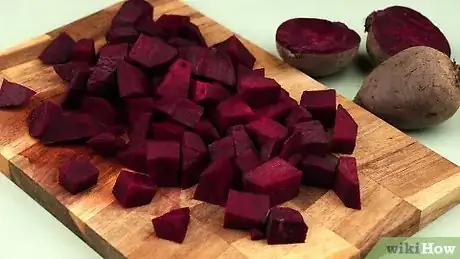
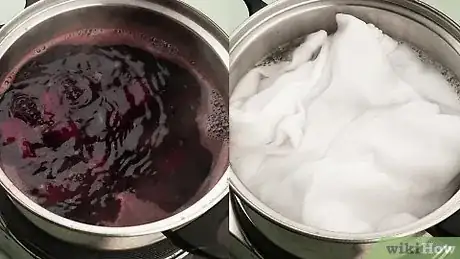


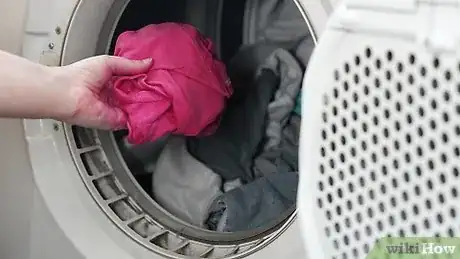
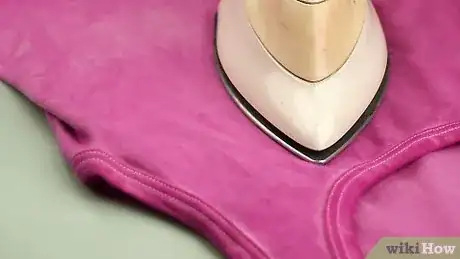

-Step-11.webp)

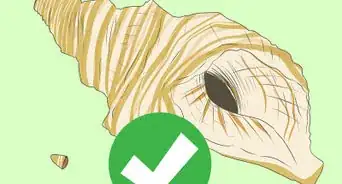
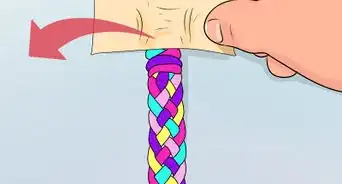
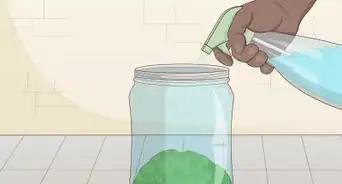
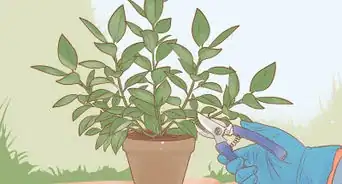








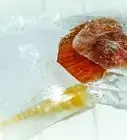
-Step-11.webp)




































